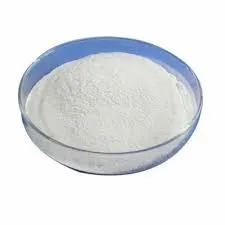
Dec . 12, 2024 09:44 Back to list
hydroxypropyl methyl cellulose ether
Hydroxypropyl Methyl Cellulose Ether Versatile Applications and Benefits
Hydroxypropyl methyl cellulose (HPMC) ether is a cellulose derivative widely utilized in various industries, owing to its unique properties and versatility. This water-soluble polymer is derived from natural cellulose, a vital component found in plant cell walls. HPMC possesses a range of applications, particularly in the food, pharmaceutical, construction, and cosmetic sectors, showcasing its multifunctional nature.
Composition and Characteristics
HPMC is synthesized by the chemical modification of cellulose through etherification, where methanol and propylene oxide are introduced to create hydroxypropyl and methyl groups. This modification enhances the solubility and hydrophilicity of cellulose, granting it the ability to form a clear viscous solution in water. One of the most notable characteristics of HPMC is its temperature-dependent gelation it remains in a liquid state at lower temperatures but transitions to a gel-like consistency when heated.
In addition to its solubility and gelling properties, HPMC exhibits excellent film-forming capabilities, rheological properties, and adhesion, making it an attractive choice for various applications. It is free from animal products and gluten, which is essential for consumers seeking vegan and allergen-free products.
Applications in Food Industry
In the food industry, HPMC is primarily recognized for its thickening, emulsifying, and stabilizing properties. It is commonly used as a food additive (E464) in products such as sauces, dressings, ice creams, and baked goods. By enhancing the texture and mouthfeel of food items, HPMC improves consumer satisfaction. It also contributes to moisture retention in baked goods, thereby prolonging shelf life.
Moreover, HPMC can be employed in low-calorie and gluten-free food formulations, providing a desired texture without the added calories or gluten content. Its ability to form gels and stabilize emulsions allows food manufacturers to develop healthier options without compromising on flavor or quality.
Pharmaceutical Applications
The pharmaceutical industry benefits significantly from HPMC's properties, particularly in drug formulation. HPMC is widely used as a binder, stabilizer, and controlled-release agent in tablets and capsules. Its excellent film-forming capabilities allow for the development of sustained-release formulations, ensuring that the active ingredient is released gradually over time, thereby improving therapeutic efficacy and patient compliance.
hydroxypropyl methyl cellulose ether

Additionally, HPMC can aid in the preparation of hydrophilic matrices for oral drug delivery, allowing for enhanced solubility and bioavailability of poorly soluble drugs. Its non-toxic nature makes it suitable for various pharmaceutical applications, including its use as a thickening agent in topical formulations, where it aids in the uniform application of active ingredients.
Role in Construction
The construction industry also recognizes HPMC's contributions, particularly in the formulation of mortars, adhesives, and paints. In these applications, HPMC acts as a water-retention agent, preventing the rapid drying of mixtures, thus allowing for improved workability and adhesion. It enhances the spreadability of tile adhesives and joint compounds, allowing for better application and improved performance.
Moreover, HPMC contributes to the improvement of the rheological properties of construction materials. It provides a creamy texture and prevents sagging, ensuring that formulations maintain their structural integrity during application.
Cosmetology and Personal Care
In the realm of cosmetics, HPMC is valued for its thickening, stabilizing, and film-forming properties. It is often found in lotions, creams, gels, and shampoos, where it improves texture and consistency while enhancing product viscosity. HPMC's non-irritating and non-toxic qualities also make it ideal for sensitive skin formulations.
Additionally, its ability to create a protective barrier on the skin contributes to hydration and improves the longevity of cosmetic products. With the growing demand for eco-friendly and natural ingredients in personal care formulations, HPMC stands out as a biodegradable option.
Conclusion
Hydroxypropyl methyl cellulose ether is a remarkable cellulose derivative with diverse applications spanning multiple industries. Its unique properties, including solubility, film-forming ability, and rheological characteristics, make it an essential ingredient in food, pharmaceuticals, construction, and cosmetics. As industries continually seek innovative solutions that promote sustainability while enhancing product quality, HPMC is poised to play an increasingly vital role in the development of modern formulations. Its versatility, safety, and effectiveness will undoubtedly ensure its continued relevance in various sectors for years to come.
-
Versatile Hpmc Uses in Different Industries
NewsJun.19,2025
-
Redispersible Powder's Role in Enhancing Durability of Construction Products
NewsJun.19,2025
-
Hydroxyethyl Cellulose Applications Driving Green Industrial Processes
NewsJun.19,2025
-
Exploring Different Redispersible Polymer Powder
NewsJun.19,2025
-
Choosing the Right Mortar Bonding Agent
NewsJun.19,2025
-
Applications and Significance of China Hpmc in Modern Industries
NewsJun.19,2025







